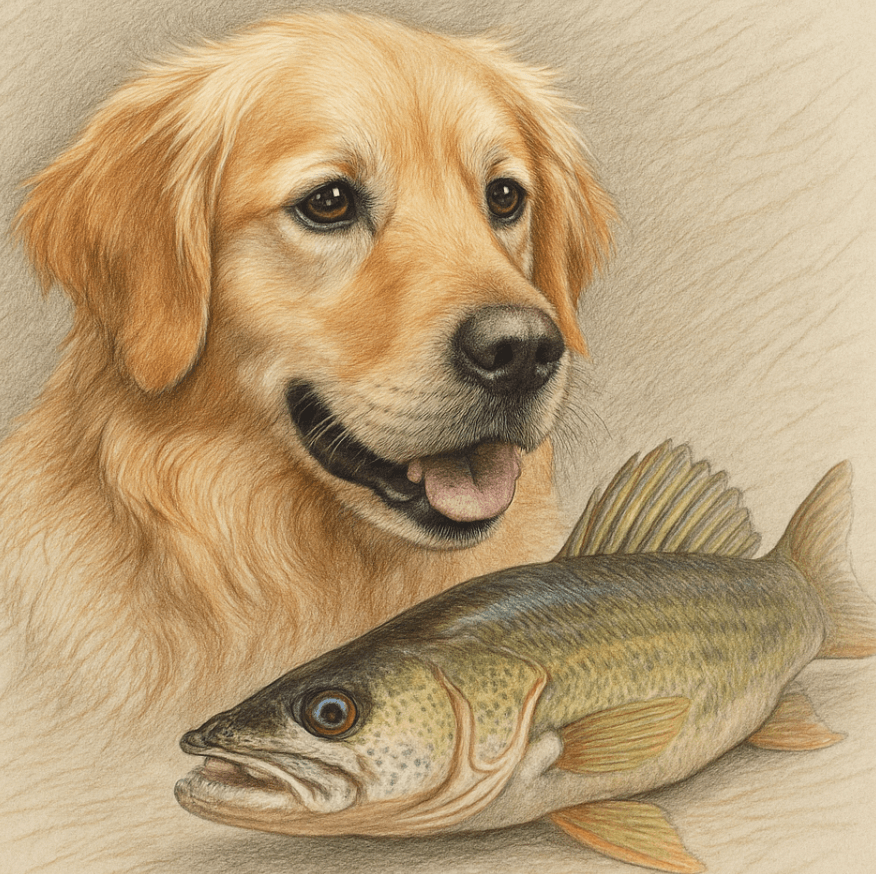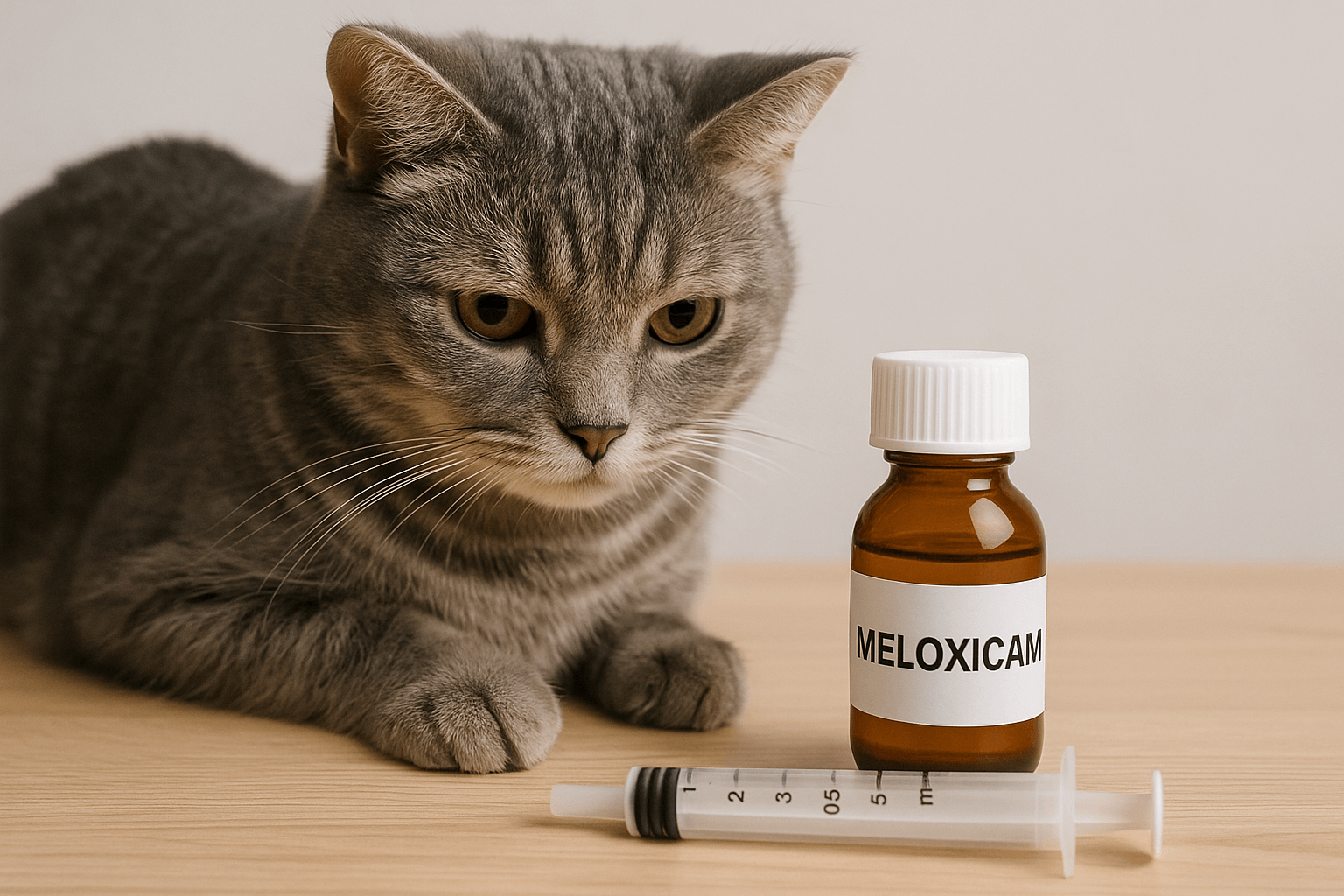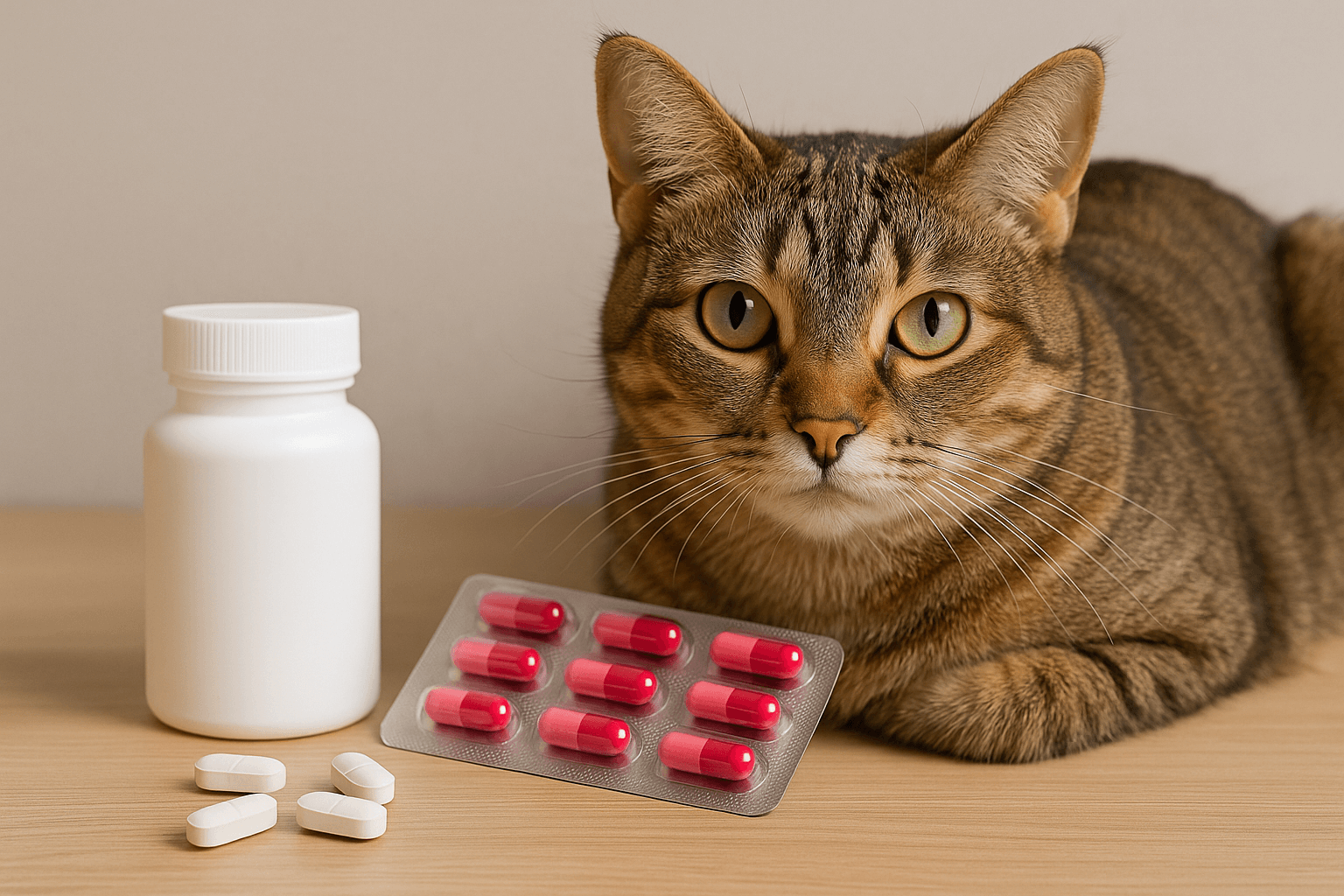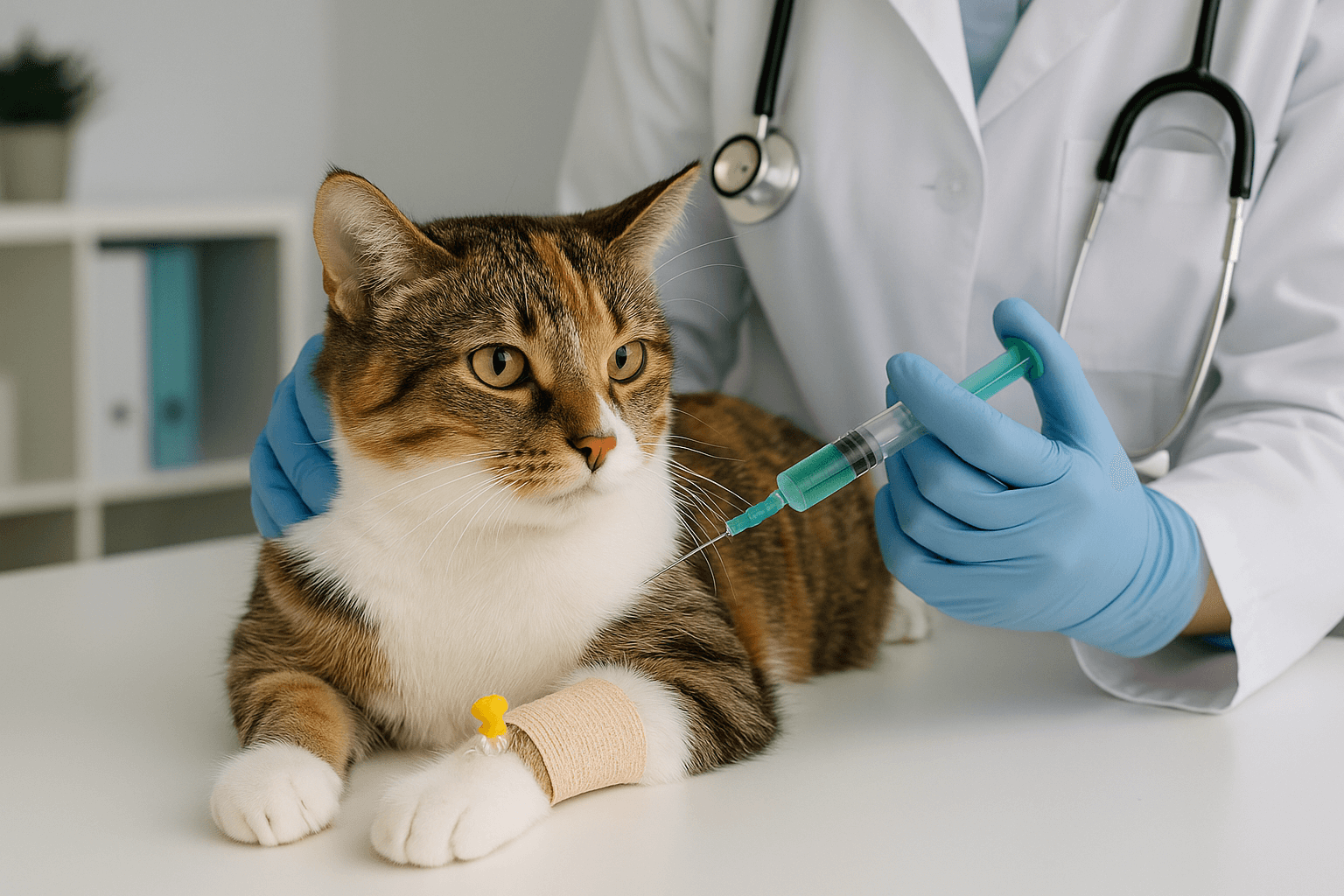Can Dogs Eat Walleye? A Comprehensive Guide for Pet Owners
When it comes to feeding your dog, variety is key—but not all human foods are safe or beneficial for our furry friends. Walleye, a popular freshwater fish known for its mild flavor and tender texture, often raises questions among pet owners. Is walleye safe for dogs? Can it provide nutritional benefits, or does it pose potential risks? As responsible dog owners, it’s important to understand what foods align with your dog’s dietary needs. In this blog post, we’ll explore everything you need to know about feeding walleye to your dog, from preparation tips to precautions, ensuring your pup stays happy and healthy.
Potential Benefits of Feeding Walleye to Dogs
Walleye can be a nutritious addition to your dog’s diet if prepared correctly. This lean fish offers several health benefits that support your dog’s overall well-being.
Rich in Omega-3 Fatty Acids:
Omega-3s promote healthy skin, a shiny coat, and reduced inflammation, making walleye an excellent choice for dogs with skin sensitivities.High-Quality Protein Source:
Walleye is packed with protein, which supports muscle development, energy levels, and overall growth.Low in Fat and Calories:
Compared to fattier fish like salmon, walleye is lighter and easier on your dog’s digestive system.Vitamins and Minerals:
Walleye contains essential nutrients like vitamin B12, phosphorus, and selenium, which contribute to bone health and immune function.Hypoallergenic Potential:
For dogs with allergies to common proteins like chicken or beef, walleye may serve as a novel protein source.
These benefits make walleye a great option for dogs when served in moderation and prepared safely.
Potential Risks of Feeding Walleye to Dogs
While walleye has many advantages, there are also risks to consider before including it in your dog’s diet. Being aware of these hazards ensures your dog’s safety.
Bones Pose a Choking Hazard:
Small bones in walleye can splinter and cause choking or internal injuries if swallowed.Risk of Parasites:
Raw or undercooked walleye may contain parasites harmful to dogs, such as tapeworms or roundworms.Allergic Reactions:
Some dogs may develop food allergies or intolerances to fish, leading to symptoms like itching or gastrointestinal upset.Mercury or Toxin Exposure:
Fish from polluted waters may contain mercury or other toxins that can harm your dog over time.Seasonings and Additives:
Spices, oils, or sauces used in cooking walleye can upset your dog’s stomach or even be toxic.
By addressing these risks, you can minimize potential dangers and ensure a safe dining experience for your dog.
Check this guide 👉Can Dogs Eat Margarine? Best 7 Expert Tips!
Check this guide 👉Can Dogs Eat Juniper Berries? Best 7 Expert Tips!
Check this guide 👉Can Dogs Eat Grapeseed Oil? Best 7 Expert Tips!

Safe Preparation Tips for Walleye | Risks to Avoid When Feeding Walleye |
|---|---|
Remove all bones thoroughly | Feeding raw or undercooked walleye |
Serve plain, without seasoning | Using oil, butter, or spices |
Cook by baking, steaming, or boiling | Overfeeding due to high nutrient density |
Check for freshness and quality | Feeding fish from polluted waters |
Introduce gradually in small amounts | Ignoring signs of allergic reactions |
How to Safely Prepare Walleye for Your Dog
If you decide to feed walleye to your dog, proper preparation is crucial to ensure their safety and enjoyment. Follow these steps for a stress-free experience.
Choose Fresh, High-Quality Fish:
Opt for wild-caught walleye from reputable sources to avoid contaminants and ensure freshness.Remove All Bones Carefully:
Use tweezers or your fingers to extract every bone, as even small fragments can pose risks.Cook Without Seasoning:
Bake, steam, or boil the walleye plain—avoid adding salt, pepper, garlic, or other seasonings.Portion Control is Key:
Serve walleye in small, bite-sized pieces appropriate for your dog’s size and dietary needs.Introduce Slowly:
Start with tiny portions to monitor for any adverse reactions before making it a regular treat.
By following these guidelines, you can safely incorporate walleye into your dog’s diet.
Signs Your Dog May Not Tolerate Walleye
Even with careful preparation, some dogs may not tolerate walleye well. Watch for these warning signs to act quickly if something goes wrong.
Gastrointestinal Upset:
Symptoms like vomiting, diarrhea, or excessive gas may indicate digestive intolerance.Skin Irritation or Itching:
Redness, scratching, or hot spots could signal an allergic reaction to the fish.Lethargy or Weakness:
Unusual tiredness or lack of energy might suggest poisoning or toxin exposure.Difficulty Breathing:
Labored breathing or coughing could indicate a choking hazard or severe allergic response.Loss of Appetite:
If your dog refuses to eat after trying walleye, it may not agree with their system.
Recognizing these signs early allows you to seek veterinary care promptly and prevent further complications.
Common Mistakes to Avoid When Feeding Walleye to Dogs
Feeding walleye to your dog requires attention to detail to avoid mistakes that could endanger their health. Here are some pitfalls to watch out for.
Serving Raw or Undercooked Fish:
Raw walleye may harbor harmful bacteria or parasites; always cook it thoroughly before offering it to your dog.Adding Harmful Ingredients:
Avoid using seasonings, oils, or sauces, as these can irritate your dog’s digestive system or even be toxic.Ignoring Portion Sizes:
Overfeeding walleye can lead to digestive upset or nutrient imbalances; stick to small, controlled servings.Skipping Bone Removal:
Even tiny bones can cause choking or internal injuries; take the time to remove them completely.Assuming All Dogs Can Eat Fish:
Some dogs have allergies or sensitivities to fish; always introduce new foods gradually and monitor for reactions.
Avoiding these mistakes ensures a safer and healthier experience for your dog.
Nutritional Comparison: Walleye vs. Other Fish
Walleye isn’t the only fish option for dogs—other varieties offer similar benefits. Here’s how walleye compares to other commonly fed fish.
Salmon:
Richer in omega-3s but higher in fat; ideal for dogs needing extra joint support but unsuitable for those prone to weight gain.Cod:
Lower in calories and fat than walleye, making it a good choice for dogs requiring a lighter protein source.Tilapia:
Affordable and mild-flavored but lower in omega-3s compared to walleye or salmon.Trout:
Similar in texture and nutrients to walleye but often less widely available depending on your location.Sardines:
Packed with omega-3s and soft bones, but higher in sodium unless rinsed thoroughly.
Understanding these differences helps you choose the best fish for your dog’s specific needs.
Fun Ways to Incorporate Walleye into Your Dog’s Diet
Adding walleye to your dog’s meals doesn’t have to be boring—it can be both fun and creative. These ideas will keep mealtime exciting while providing balanced nutrition.
Mix with Kibble:
Top your dog’s regular kibble with small pieces of cooked walleye for added flavor and nutrition.Create Homemade Treats:
Blend cooked walleye with mashed sweet potatoes or pumpkin and bake into bite-sized treats.Add to Broth Bowls:
Combine walleye chunks with low-sodium chicken or beef broth for a hydrating and tasty meal.Freeze for Summer Snacks:
Blend walleye with water or yogurt and freeze into popsicles for a refreshing summer treat.Use as Training Rewards:
Cut walleye into tiny cubes and use them as high-value rewards during training sessions.
Incorporating walleye creatively ensures your dog enjoys the benefits while staying engaged and excited about mealtime.
Frequently Asked Questions About Feeding Walleye to Dogs
How often can I feed my dog walleye?
Walleye should be an occasional treat, no more than once or twice a week, to avoid overloading their system with nutrients.
Can puppies eat walleye?
Yes, but only in small, plain portions and after consulting your veterinarian to ensure it suits their developmental needs.
Is raw walleye safe for dogs?
No, raw walleye poses risks of parasites and bacteria; always cook it thoroughly before serving.
What should I do if my dog swallows a bone?
Contact your veterinarian immediately to assess the situation and prevent potential blockages or injuries.
Are there alternative fish options for dogs?
Yes, salmon, cod, and tilapia are safer alternatives when properly prepared and deboned.
Making Informed Choices About Feeding Walleye to Your Dog
Feeding walleye to your dog can be a nutritious and enjoyable treat when done safely and responsibly. While this fish offers numerous health benefits, it’s essential to be mindful of potential risks and take precautions to protect your pup. By understanding how to prepare walleye properly, recognizing signs of intolerance, and consulting your veterinarian, you can ensure your dog enjoys the benefits without compromising their health. Remember, every dog is unique, so tailor their diet to suit their individual needs—and always prioritize their safety above all else.
Cat Fever Treatment: Best 7 Expert Tips! Discover expert advice on identifying, managing, and treating fever in cats to ensure their quick recovery and well-being.
Understanding Meloxicam for Cats: Best 7 Expert Tips! Learn how to safely administer meloxicam, manage side effects, and ensure your cat's comfort with expert advice on feline pain relief.
Amoxicillin for Cat UTI: Best 7 Expert Tips! Discover safe usage, dosage guidelines, and expert advice on treating feline urinary tract infections effectively with amoxicillin.
Understanding Cat Cancer Treatment: Best 7 Expert Tips! Discover expert advice on managing feline cancer, from early detection to treatment options, ensuring your cat’s health and comfort.




